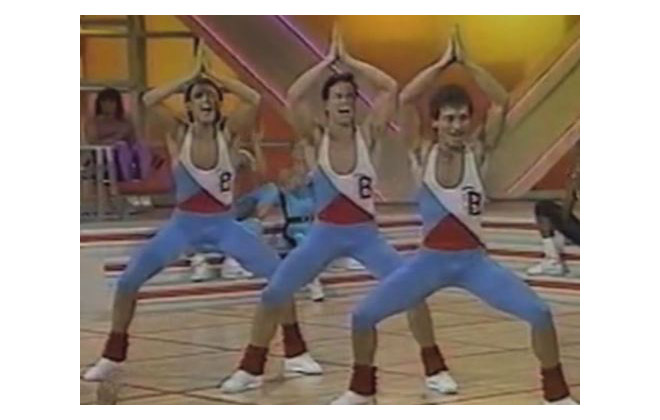psychology

This work explored the potential negative consequences of unexpected help. A behavioral observation and a survey study found that men are unlikely to have the door held open for them in a chivalrous manner, whereby they walk through the door before the person helping them does. In an experimental field study, passersby were randomly assigned to experience this type of door-holding help or not. Males who had the door held for them in this manner by a male confederate reported lower self-esteem and self-efficacy than males who did not have the door held for them. Females were unaffected by door-holding condition. These results demonstrate negative consequences of seemingly innocuous but unexpected helping behavior that violates gender norms.
{ Social Influence | via Improbable }
psychology | February 17th, 2014 12:06 pm

This article examines cognitive links between romantic love and creativity and between sexual desire and analytic thought based on construal level theory. It suggests that when in love, people typically focus on a long-term perspective, which should enhance holistic thinking and thereby creative thought, whereas when experiencing sexual encounters, they focus on the present and on concrete details enhancing analytic thinking. Because people automatically activate these processing styles when in love or when they experience sex, subtle or even unconscious reminders of love versus sex should suffice to change processing modes. Two studies explicitly or subtly reminded participants of situations of love or sex and found support for this hypothesis.
{ Personality and Social Psychology Bulletin | PDF }
art { Horyon Lee }
psychology, relationships | February 13th, 2014 12:11 pm

The group of people who took revenge even after a period of time still struggled with more vengeful feelings than the people who did not take revenge. Although 58% experienced satisfaction and 16% experienced triumph, only 19% reported their vengeful feelings to be completely gone, compared with 40% of the people who did not take revenge.
{ International Journal of Offender Therapy and Comparative Criminology | via Mind Hacks | Continue reading }
As with hipsters, few people cop to being haters. Yet visit almost any well-trafficked comment thread and haters outnumber the rest.
{ TNI | Continue reading }
psychology | February 5th, 2014 3:45 pm

The key way that economists model behavior is by assuming that people have preferences about things. Often, but not always, these preferences are expressed in the form of a utility function. But there are some things that could happen that could seriously mess with this model. Most frightening are “framing effects”. This is when what you want depends on how it’s presented to you. […]
One of the most important tools we have to describe people’s behavior over time is the notion of time preference, also called “discounting”. This means that we assume that people care about the future less than they care about the present. Makes sense, right? But while certain kinds of discounting cause people’s choices to be inconsistent, other kinds would cause people to make inconsistent decisions. For example, some people might choose not to study hard in college, even though they realize that someday they’ll wake up and say “Man, if I could go back in time I would have studied more in college!”. This kind of thing is called hyperbolic discounting. It would make it a lot harder to model human behavior. But the models would still be possible to make.
But what would be really bad news is if people’s time preferences switched depending on framing effects! If that happened, then it would be very, very hard to model individual decision-making over time.
Unfortunately, that is exactly what experimental economist David Eil of George Mason University has found in a new experiment.
{ Noahpinion | Continue reading }
economics, psychology, theory | January 31st, 2014 1:50 pm

“Darkness increases freedom from constraints, which in turn promotes creativity,” report Anna Steidle of the University of Stuttgart and Lioba Werth of the University of Hohenheim. A dimly lit environment, they explain in the Journal of Environmental Psychology, “elicits a feeling of freedom, self-determination, and reduced inhibition,” all of which encourage innovative thinking. […]
However, the darkness-spurs-innovation equation did not always hold true. In another experiment, the researchers found “the darkness-related increase in creativity disappeared when using a more informal, indirect light instead of direct light.”
In this experiment, the light provided by the luminaire illuminated the ceiling and surrounding walls instead of providing a “top-down” light on the desk. Under those conditions, the dimness did not heighten a sense of freedom from constraints, and thus did not result in more creativity.
What’s more, the researchers note, innovation consists of two distinct phases: generating ideas, and then analyzing and implementing them. The latter requires analytical thinking, and in a final experiment, participants did better on that task when they were in a brightly lit room rather than a dimly lit one.
{ Pacific Standard | Continue reading }
psychology | January 31st, 2014 1:44 pm

Previous research has shown that men with higher facial width-to-height ratios (fWHRs) have higher testosterone and are more aggressive, more powerful, and more financially successful. We tested whether they are also more attractive to women in the ecologically valid mating context of speed dating.
Men’s fWHR was positively associated with their perceived dominance, likelihood of being chosen for a second date, and attractiveness to women for short-term, but not long-term, relationships.
{ Psychological Science | PDF }
related { Finger lengths as a key to desirability in romantic couples }
faces, psychology, relationships | January 30th, 2014 11:19 am

Children who had been praised for being smart became far more likely to view intellect as a fixed entity—determined at birth and stable throughout life—whereas those praised for effort became more likely to see it as a result of hard work that could improve and grow over time. […]
Dweck has found that people with a fixed mind-set—that is, those who believe that our intellect and abilities are determined by the luck of the draw at birth, and that nothing we do will change that—tend to perform worse over time. They are less motivated in their studies, have a harder time learning from mistakes, and perform less well in high school, college, and beyond. Those who see intelligence as malleable, on the other hand, can end up not only performing better and learning more from their failures but even raising their I.Q. scores by being more motivated.
{ New Yorker | Continue reading }
photo { Jean-François Lepage }
psychology | January 26th, 2014 4:41 pm

You prefer apples to oranges, but cherries to apples. Yet if I offer you just cherries and oranges, you take the oranges. […] New research shows that sometimes a decision like this, which sounds irrational, can actually be the best one.
{ Nature | Continue reading }
photo { James Tolich }
photogs, psychology | January 19th, 2014 6:23 am

People whose cellphones move at a certain clip across city parks between 5:30 and 8:30 every morning are flagged by Viasense’s algorithm as “early morning joggers.” When you give your smartphone permission to access your location, you may be sharing a lot more than you realize.
{ WSJ | Continue reading }
We show that easily accessible digital records of behavior, Facebook Likes, can be used to automatically and accurately predict a range of highly sensitive personal attributes including: sexual orientation, ethnicity, religious and political views, personality traits, intelligence, happiness, use of addictive substances, parental separation, age, and gender. […]
Table S1 presents a sample of highly predictive Likes related to each of the attributes. For example, the best predictors of high intelligence include “Thunderstorms,” “The Colbert Report,” “Science,” and “Curly Fries,” whereas low intelligence was indicated by “Sephora,” “I Love Being A Mom,” “Harley Davidson,” and “Lady Antebellum.” Good predictors of male homosexuality included “No H8 Campaign,” “Mac Cosmetics,” and “Wicked The Musical,” whereas strong predictors of male heterosexuality included “Wu-Tang Clan,” “Shaq,” and “Being Confused After Waking Up From Naps.” Although some of the Likes clearly relate to their predicted attribute, as in the case of No H8 Campaign and homosexuality, other pairs are more elusive; there is no obvious connection between Curly Fries and high intelligence.
Moreover, note that few users were associated with Likes explicitly revealing their attributes. For example, less than 5% of users labeled as gay were connected with explicitly gay groups, such as No H8 Campaign, “Being Gay,” “Gay Marriage,” “I love Being Gay,” “We Didn’t Choose To Be Gay We Were Chosen.” […]
Predicting users’ individual attributes and preferences can be used to improve numerous products and services. For instance, digital systems and devices (such as online stores or cars) could be designed to adjust their behavior to best fit each user’s inferred profile. Also, the relevance of marketing and product recommendations could be improved by adding psychological dimensions to current user models. For example, online insurance advertisements might emphasize security when facing emotionally unstable (neurotic) users but stress potential threats when dealing with emotionally stable ones.
{ PNAS | PDF }
related { PhD candidate in sociology explains his experiences working for Facebook }
photo { Albert Moldvay, A woman shops for a fur coat at Bergdorf Goodman in New York City, 1964 }
marketing, psychology, social networks, spy & security | January 16th, 2014 9:04 am

The placebo effect is known far and wide. Give somebody a sugar pill, tell them it’s aspirin, and they’ll feel better. What’s less well-known is that there’s evidence of the placebo effect in domains that go beyond the commonly known medical scenarios.
One study found that hotel maids who were told their work was good exercise later scored higher than a control group on a range of health indicators. Another study found that when participants were told athletes had excellent vision, they demonstrated better vision when doing a more-athletic activity relative to a less-athletic activity. Many studies have also shown that placebo caffeine can have an impact. In one experiment caffeine placebos improved cognitive performance among participants who were in the midst of 28 hours of sleep deprivation.
Given that caffeine placebos can mitigate the effects of sleep deprivation, Christina Draganich and Kristi Erdal of Colorado College decided to take the logical next step and investigate whether the effects of sleep deprivation could be influenced by perceptions about sleep quality. In other words, could making people think their sleep quality was better or worse influence the cognitive effects of sleep?
{ Peer-reviewed by my neurons | Continue reading }
images { 1. David Cutter | 2 }
food, drinks, restaurants, psychology, sleep | January 16th, 2014 8:06 am

New research led by the University of Melbourne has helped debunk the common belief that a sixth sense, also known as extrasensory perception (ESP), exists. […]
“There is a common belief that observers can experience changes directly with their mind, without needing to rely on the traditional physical senses such as vision, hearing, taste, smell and touch to identify it. This alleged ability is sometimes referred to as a sixth sense or ESP.
“We were able to show that while observers could reliably sense changes that they could not visually identify, this ability was not due to extrasensory perception or a sixth sense,” he said.
{ University of Melbourne | Continue reading }
psychology | January 15th, 2014 1:47 pm

There are many philosophical questions surrounding the notion of lying. Is it ever morally acceptable to lie? Can we acquire knowledge from people who might be lying to us? More fundamental, however, is the question of what, exactly, constitutes the concept of lying. According to one traditional definition, lying requires intending to deceive. More recently, Thomas Carson has suggested that lying requires warranting the truth of what you do not believe.
This paper examines these two prominent definitions and some cases that seem to pose problems for them. Importantly, theorists working on this topic fundamentally disagree about whether these problem cases are genuine instances of lying and, thus, serve as counterexamples to the definitions on offer. To settle these disputes, we elicited judgments about the proposed counterexamples from ordinary language users unfettered by theoretical bias. The data suggest that everyday speakers of English count bald-faced lies and proviso lies as lies. Thus, we claim that a new definition is needed to capture common usage.
{ Philosophical Psychology | via Improbable }
ideas, psychology | January 6th, 2014 1:14 pm

Playing Moderately Hard to Get
Undergraduate college student participants imagined a potential romantic partner who reciprocated a low (reciprocating attraction one day a week), moderate (reciprocating attraction three days a week), high (reciprocating attraction five days a week), or unspecified degree of attraction (no mention of reciprocation). Participants then rated their degree of attraction toward the potential partner. […] The results support the notion that playing moderately hard to get elicits more intense feelings of attraction from potential suitors than playing too easy or too hard to get.
{ Interpersona | Continue reading }
photo { Danilo Hess }
psychology, relationships | January 6th, 2014 12:19 pm

Humans show a natural tendency to discount bad news while incorporating good news into beliefs (the “good news–bad news effect”), an effect that may help explain seemingly irrational risk taking. Understanding how this bias develops with age is important because adolescents are prone to engage in risky behavior; thus, educating them about danger is crucial.
We reveal a striking valence-dependent asymmetry in how belief updating develops with age. In the ages tested (9–26 y), younger age was associated with inaccurate updating of beliefs in response to undesirable in- formation regarding vulnerability. In contrast, the ability to update beliefs accurately in response to desirable information remained relatively stable with age. This asymmetry was mediated by adequate computational use of positive but not negative estimation errors to alter beliefs.
The results are important for understanding how belief formation develops and might help explain why adolescents do not respond adequately to warnings.
{ PNAS | PDF }
kids, psychology | December 23rd, 2013 2:54 pm

Neuman examined three common types of fallacious arguments:
• The false cause fallacy.
• The appeal to the people fallacy.
• The appeal to ignorance fallacy.
An argument using the false cause fallacy […]: I watered my lawn and then it rained. It must have rained because I watered my lawn.
An argument that appeals to the people […]: Most people believe that extraterrestrials exist, so you should too.
An argument that includes an appeal to ignorance […]: We know that Big Foot exists, because no one has been able to prove that it doesn’t.
Neuman’s idea is that the ability to detect fallacious arguments, such as these, is related to skill in drawing inferences from text. In order to test his idea, Neuman measured student’s performance on detection of argument fallacies, deductive logic, and the inference process in reading comprehension.
He found that comprehension was significantly related to spotting fallacies. Performance on the pure deductive logic task was not.
{ Global Cognition | Continue reading }
image { Slater Bradley and Ed Lachman, Production still from Shadow, 2010 }
guide, psychology | December 17th, 2013 1:38 am

We evaluated the impact of different presentation methods for evaluating how funny jokes are. We found that the same joke was perceived as significantly funnier when told by a robot than when presented only using text.
{ Dr. Hato | PDF }
Ongoing projects: Adding farting to the joking robots.
{ Dr. Hato | Continue reading }
haha, noise and signals, psychology, robots & ai | December 16th, 2013 11:03 am

The eminent sociologist Erving Goffman suggested that life is a series of performances, in which we are all continually managing the impression we give other people. […]
But recently we have learned that some of our social responses occur even without conscious consideration. […] [L]ab experiments show that when people happen to be holding a hot drink rather than a cold one, they are more likely to trust strangers. Another found that people are much more helpful and generous when they step off a rising escalator than when they step off a descending escalator—in fact, ascending in any fashion seems to trigger nicer behavior. […]
Neuroscientists have found that environmental cues trigger immediate responses in the human brain even before we are aware of them. As you move into a space, the hippocampus, the brain’s memory librarian, is put to work immediately. It compares what you are seeing at any moment to your earlier memories in order to create a mental map of the area, but it also sends messages to the brain’s fear and reward centers. Its neighbor, the hypothalamus, pumps out a hormonal response to those signals even before most of us have decided if a place is safe or dangerous. Places that seem too sterile or too confusing can trigger the release of adrenaline and cortisol, the hormones associated with fear and anxiety. Places that seem familiar, navigable, and that trigger good memories, are more likely to activate hits of feel-good serotonin, as well as the hormone that rewards and promotes feelings of interpersonal trust: oxytocin.
{ The Atlantic | Continue reading }
photo { Dennis Stock }
neurosciences, psychology, relationships | December 13th, 2013 11:28 am

Being bored has just become a little more nuanced, with the addition of a fifth type of boredom by which to describe this emotion. […]
The study builds on preliminary research done by Goetz and colleague Anne Frenzel in 2006 in which they differentiated between four types of boredom according to the levels of arousal (ranging from calm to fidgety) and how positive or negative boredom is experienced (so-called valence). These were indifferent boredom (relaxed, withdrawn, indifferent), calibrating boredom (uncertain, receptive to change/distraction), searching boredom (restless, active pursuit of change/distraction) and reactant boredom (high reactant, motivated to leave a situation for specific alternatives).
The researchers have now identified another boredom subtype, namely apathetic boredom, an especially unpleasant form that resembles learned helplessness or depression. It is associated with low arousal levels and high levels of aversion.
{ Springer | Continue reading }
photo { Robert Carrithers }
photogs, psychology | November 18th, 2013 10:51 am

Research in recent years has suggested that young Americans might be less creative now than in decades past, even while their intelligence — as measured by IQ tests — continues to rise.
But new research from the University of Washington Information School and Harvard University, closely studying 20 years of student creative writing and visual artworks, hints that the dynamics of creativity may not break down as simply as that.
Instead, it may be that some aspects of creativity — such as those employed in visual arts — are gently rising over the years, while other aspects, such as the nuances of creative writing, could be declining. […]
The review of student visual art showed an increase in the sophistication and complexity both in the designs and the subject matter over the years. The pieces, Davis said, seemed “more finished, and fuller, with backgrounds more fully rendered, suggesting greater complexity.” Standard pen-and-ink illustrations grew less common over the period studied, while a broader range of mixed media work was represented.
Conversely, the review of student writing showed the young authors adhering more to “conventional writing practices” and a trend toward less play with genre, more mundane narratives and simpler language over the two decades studied.
{ University of Washington | Continue reading }
art, ideas, psychology | November 15th, 2013 12:04 pm

“Recent studies show that when a person looks similar to ourselves, we automatically believe they are trustworthy. Here we show for the first time that the reverse is also true. When a person is shown to be more trustworthy, it can lead us to perceive that person as looking more similar to ourselves,” said researcher Harry Farmer.
{ EurekAlert | Continue reading }
art { Tim Geoghegan, Influence Deflection Helmet, 2013 }
psychology, visual design | November 7th, 2013 8:23 pm






















